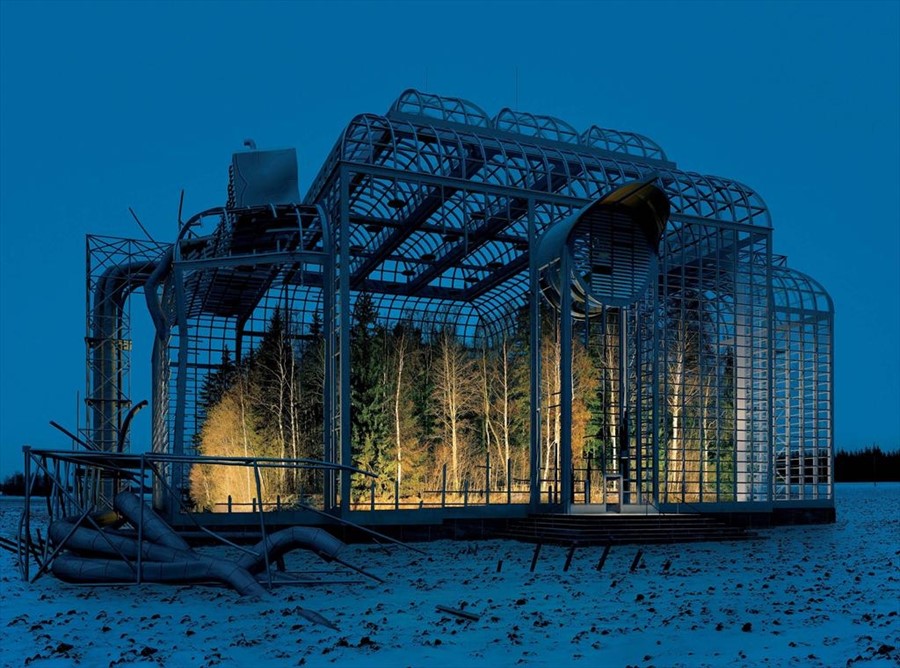Opening tomorrow at Hamburg’s Museum für Kunst und Gewerbe, the Climate Capsules exhibition highlights twenty-five micro habitats “intended to make human life possible independently of the surrounding climatic conditions...
Opening tomorrow at Hamburg’s Museum für Kunst und Gewerbe, the Climate Capsules exhibition highlights twenty-five micro habitats “intended to make human life possible independently of the surrounding climatic conditions.” Divided into five forms – body capsules, living capsules, urban capsules, nature capsules and atmosphere capsules – they range from Ant Farm’s inflatable domes to a personal ‘Habitent’ by artist Lucy Orta.
Along with a who’s who of habitat builders throughout history – from Richard Buckminster Fuller to Tomás Saraceno – there are also geo-engineering concepts for fertilizing sea water and injecting the stratosphere with sulphur, while the literature talks soberly of the fact that “climatological developments have already come to the point where emission-reduction strategies become obsolete”.
While thought-provoking, sleek-looking and useful in hostile environments, we have to be careful when talking about such ideas, structures and artwork in a global climate context. Thinking of these tiny spaces as escape capsules risks taking us further down the ‘mitigation’ way of thinking: we’re all doomed so we might as well deal with it, and relax. Instead of the radical lifestyle changes that few (let’s be honest) are eager to make, the idea of a personal haven offers a false reassurance that even if the worse comes to worst we’ll still be OK – because, hey, we’ve got our designer living pod, organic micro farm and hydrogen-powered concept car. Indeed, the exhibition’s very subtitle – Means of Surviving Disaster – hints at world where the worst has happened, but in which we can survive just fine.
The enormous cost of building the International Space Station shows how hard it is to build a completely self-contained environment cut off from the planet as a whole, while large-scale ‘capsules’ on earth remain too costly and complex to maintain as serious solutions to a changing earth. Ilkka Halso’s Museum of Nature is an imaginative extension of facilities like the Eden Project and Biosphere 2, both at best capable of supporting a tiny fraction of life – human and otherwise – inside their utopian domes.
So let’s hope that’s what audiences take away from Climate Capsules – not the fact that it will be fun and easy to protect ourselves within ingenious and eye-catching architectural creations, but how hard – and undesirable – that actually is.


